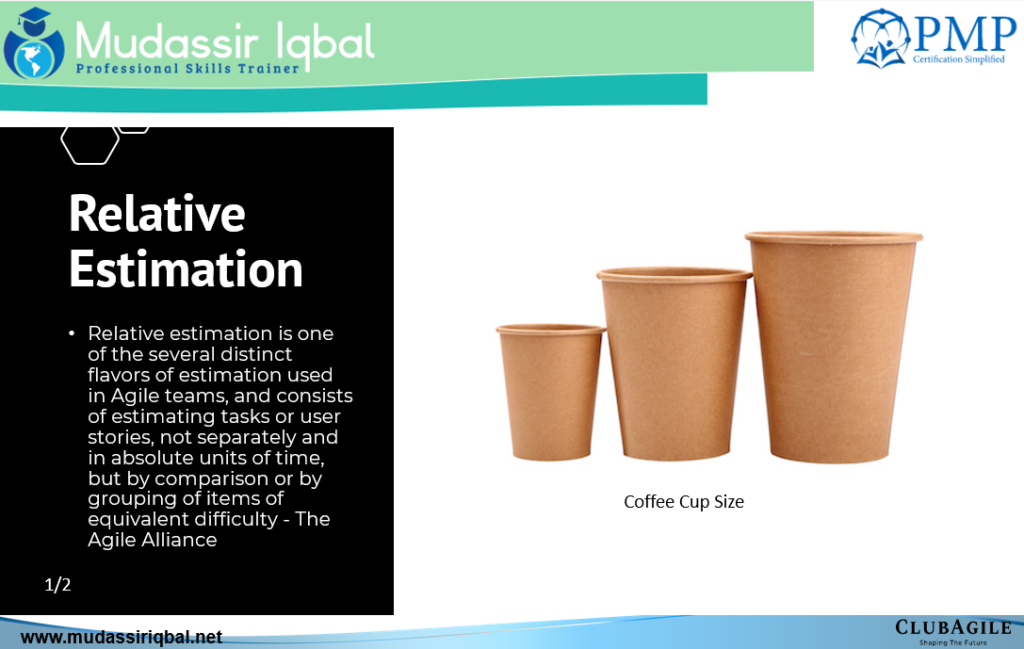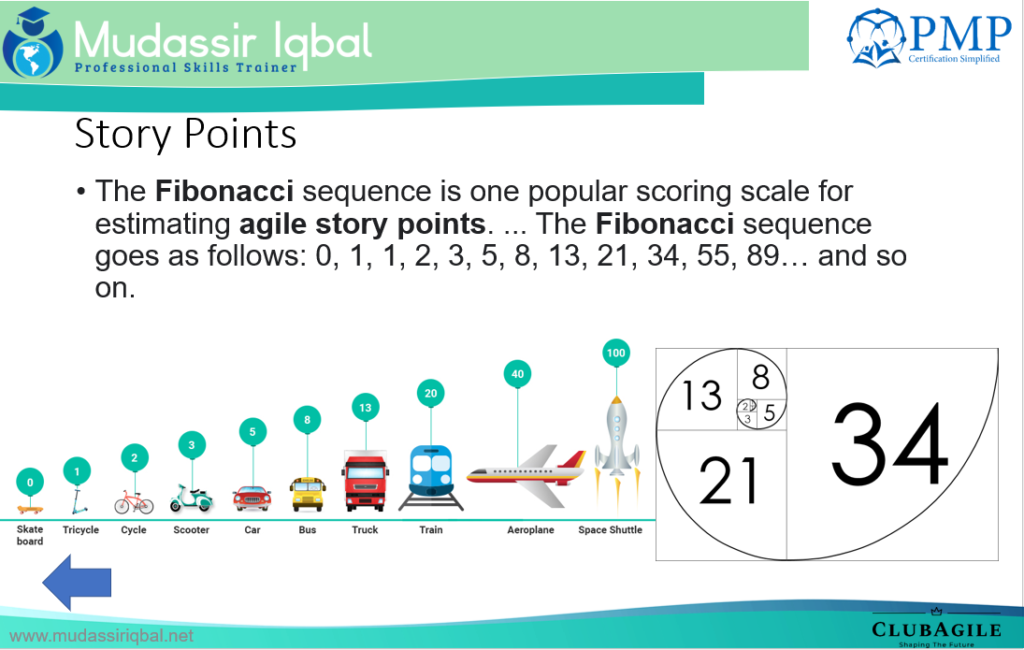Relative Estimation is an Agile Project Management technique used to estimate the size or complexity of a task or project by comparing it to other similar tasks or projects. Rather than providing an exact numerical estimate, relative estimation involves assessing the difficulty of a task or project by comparing it to other tasks or projects that have already been completed.

An example of relative estimation would be to say, “I think this feature is twice as complex as this other feature.” There is no mention of a time requirement, just that it is more complex than the other.
You may say that feature B is “twice as complex” as feature A, which is a feature that you have completed. Because feature A took you three weeks, a reasonable guess for feature B would be six weeks!
Story Points
A common technique for relative estimation is the use of story points, where the complexity of a user story is estimated in comparison to other user stories that have already been estimated. The team may assign a higher number of story points to a user story that is more complex than others, and a lower number of story points to a user story that is less complex.

Benefits of using the technique
It has several benefits in Agile software development. Here are some of them:
- Helps to find accurate estimates for releases and forecasting.
- Eliminates waste.
- Prevents confusion between estimates and commitments.
- Leads to increased customer satisfaction
Tools that can be used for Relative Estimation
- Planning Poker: This is a popular Agile technique where team members use a deck of cards with numbers or Fibonacci sequence values to estimate the relative size or complexity of a task or feature.
- T-Shirt Sizes: This is a simple and intuitive technique where team members assign t-shirt sizes (e.g., S, M, L, XL) to tasks based on their relative complexity.
- Dot Voting: This is a visual technique where team members use stickers or dots to vote on the relative size or complexity of tasks or features, based on their understanding of the project.
Relative estimation can be useful in situations where it is difficult to provide an exact estimate due to uncertainty or lack of information. It can also help teams prioritize tasks and allocate resources more effectively.

